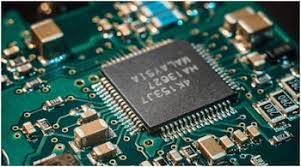Huawei Plans to Mass-Produce New AI Chip in 2025 Amid U.S. Sanctions
Despite U.S. restrictions, Huawei aims to mass-produce its Ascend 910C AI chip by early 2025. Production challenges persist due to limited access to advanced semiconductor technology.

Huawei is determined to push ahead with the mass production of its latest artificial intelligence (AI) chip, the Ascend 910C, set for rollout in early 2025. Despite ongoing challenges and setbacks due to U.S. sanctions, the Chinese tech giant is gearing up to compete with leading AI chipmaker Nvidia. The Ascend 910C aims to make a major impact in the AI hardware market, but Huawei's ambitions are complicated by ongoing geopolitical tensions and limitations in chip manufacturing technology.
According to sources familiar with the company’s plans, Huawei has already begun sending samples of the Ascend 910C to tech companies and has started receiving orders. However, the company’s progress is far from smooth. The rollout of the Ascend 910C is clouded by issues around the chip’s production yield, which has been impacted by the restrictions imposed by the U.S. government.
U.S. Sanctions: A Barrier to Huawei’s Ambitions
The U.S. has been at the heart of Huawei’s struggles, imposing a series of sanctions that have significantly hindered the company’s ability to procure advanced semiconductor manufacturing technology. One of the major hurdles has been Huawei’s inability to access extreme ultraviolet (EUV) lithography machines, a critical technology for producing cutting-edge chips. These machines, manufactured by ASML in the Netherlands, are essential for creating the advanced chips that power AI applications.
The absence of EUV technology has made it difficult for Huawei to achieve the necessary yield rates for its chips. Yield refers to the proportion of chips produced that are fully functional and meet quality standards. To be commercially viable, advanced chips typically require a yield rate of at least 70%. However, the Ascend 910C’s yield is reportedly just 20%, according to sources. Huawei’s current AI chip, the Ascend 910B, which is also produced by the Semiconductor Manufacturing International Corp (SMIC) in China, has a yield rate of around 50%.
This issue of low yield rates is having significant consequences. Despite high demand for its chips—such as a major order for 100,000 Ascend 910B units from TikTok’s parent company, ByteDance—Huawei has struggled to meet these orders, with fewer than 30,000 units delivered by mid-2023. Other Chinese tech companies that have placed orders with Huawei are facing similar delays.
The Role of SMIC and TSMC in Huawei’s Chip Production
Huawei is working with two key players in the semiconductor manufacturing space: SMIC, China’s largest contract chipmaker, and Taiwan’s TSMC (Taiwan Semiconductor Manufacturing Company). SMIC is responsible for making Huawei’s Ascend 910 series chips on its N+2 process, but due to limitations in technology and equipment, the quality and yield have been suboptimal. SMIC's production processes are less advanced compared to TSMC's, which uses more sophisticated equipment, including ASML's DUV (deep ultraviolet) machines.
Interestingly, Huawei has supplemented its supply of chips from SMIC with those made by TSMC, according to industry insiders. However, in a move that has escalated tensions between the U.S. and China, the U.S. government has clamped down on TSMC’s ability to sell advanced AI chips to Chinese companies, including Huawei. This restriction, introduced in 2023, has further complicated Huawei’s access to the necessary chips for its own devices.
Geopolitical Implications and Future Challenges
Huawei’s efforts to produce the Ascend 910C are taking place in the midst of a complex geopolitical landscape. The U.S. has long been concerned about Huawei’s technological advancements, citing national security risks related to the potential for Chinese espionage. This has led to a series of actions that have severely impacted Huawei’s ability to stay competitive, particularly in the semiconductor space. The Trump administration's tough stance on China’s tech rise has set the stage for more stringent export controls, a trend that is likely to continue under the Biden administration.
Looking ahead, the geopolitical challenges for Huawei are unlikely to ease. While China has made efforts to build its semiconductor industry and reduce reliance on foreign technology, the lack of access to cutting-edge manufacturing tools remains a significant barrier. The U.S. restrictions on EUV and DUV technology have left Huawei’s production capabilities lagging behind global competitors.
Moreover, the situation could become even more challenging as the U.S. expands its sanctions on Chinese tech firms. The Biden administration, as well as potential future policies under a second Trump term, are expected to further tighten restrictions on semiconductor exports to China. As a result, Huawei may continue to face significant hurdles in its pursuit of AI chip dominance.
Looking Ahead: Huawei’s Long-Term Strategy
Despite the obstacles, Huawei is staying committed to its AI ambitions. The company is focusing on strategic government and corporate orders, prioritizing clients that may offer longer-term contracts. Huawei's plans to mass-produce the Ascend 910C by 2025 indicate that it believes it can overcome the current production challenges, even if the path forward remains uncertain.
In the meantime, Huawei is likely to continue working with SMIC and other manufacturers to improve its chip production yield. However, unless the company gains access to more advanced semiconductor technology, it may struggle to compete at the same level as global leaders like Nvidia and TSMC.


